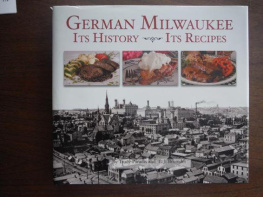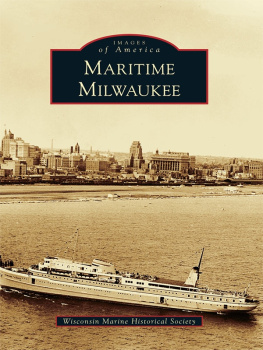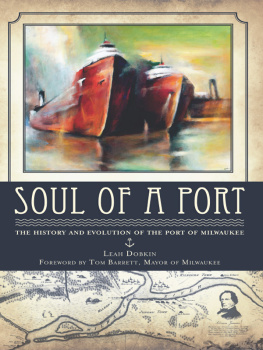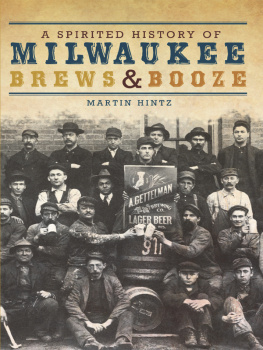GERMAN MILWAUKEE
ITS HISTORY - ITS RECIPES
BY
TRUDY KNAUSS PARADIS
WITH E. J. BRUMDER
EDITED BY
ROBIN PARADIS-KENT

G. BRADLEY PUBLISHING, INC. ST. LOUIS, MISSOURI 63122
PUBLICATION STAFF
| Authors: | Trudy Knauss Paradis |
| E. J. Brumder |
| Editor: | Robin Paradis-Kent |
| Book Design: | Diane Kramer |
| Color Photography | Katherine Bish |
| Photo Design | Michael Bruner |
| Dust Jacket Design | Michael Bruner |
| Copy Editor | Diane Gannon |
| Publisher: | G. Bradley Publishing, Inc. |
THIS PUBLICATION WAS SPONSORED BY THE MILWAUKEE TURNERS

Rose Marie Barber
The publication staff is extremely thankful to the Milwaukee Turners and its Executive Director Rose Marie Barber. Mrs. Barber passed away in September 2006. She was instrumental in the development and production of German Milwaukee: Its History Its Recipes.

Katherine Bish
A graduate of Eastern Illinois School of Journalism, Katherine Bish has been telling her stories through pictures since 1998. Her food photography has appeared in St. Louis Magazine, Sauce Magazine, and the St. Louis Post-Dispatch. Her work is featured in the 2005 publication Greektown Chicago: Its History Its Recipes.
DEDICATION
It is with overwhelming pride for our German ancestors that we dedicate this book to the early immigrants whose indomitable spirit led them to embark on a new life; leaving their home, friends, and family. After overcoming all the odds against them, they not only bettered their own lives; they have ultimately enriched ours and, indeed, the City of Milwaukee.
Reprint 2007
Copyright 2006 by G. Bradley Publishing, Inc. All rights reserved. Printed in the United States of America. No part of this publication may be reproduced, stored in a retrieval system, or transmitted, in any form or by any means, electronic, mechanical, photocopying, or otherwise without the prior permission of the publisher.
ISBN 978-0-9774512-1-0
Printed in the U.S.A.
Please check the G. Bradley Publishing web site to review other Midwest history books such as this:
www.gbradleypublishing.com
TABLE OF CONTENTS
History Sections:
The New Land
Herzlich Willkommen! ........... Heartfelt Welcome!
Our ship docked in the harbor. There was no pier. In the distance we saw a few houses. Is this truly Milwaukee? Three months had passed since we began our journey. Just then we were lowered into small boats which took us and all our belongings to shore. Sitting on our featherbeds and cases, we waited while Papa went into town to secure lodgings for the night. Luckily, he found rooms and, in the chilly night air, we all hurried as best we could on the wet sand. Then, to bed on dry land. Gute Nacht! So began our adventure in our new homeland.
We were among thousands of immigrants who sought more space and larger opportunities for themselves and their children. Milwaukee was Wisconsins most promising village with pleasant surroundings and climate. It reminded us of home.
Grss Gott ........... Hello
The swift passage of time often erases knowledge of the past and with that loss a lack of understanding why things are the way they are today, and what gave rise to them. In contemporary Wisconsin, the impact of the arrival of people from many different world cultures tends to obscure the knowledge of earlier immigrants who contributed greatly to the foundation of present-day society. In Wisconsin in the 19th and 20th centuries many German immigrants and people from German-speaking lands contributed heavily to the kind of culture that currently exists in the state. And it is important, therefore, from time to time to try to recall these contributions.
During the 19th century, there was a very large migration of people from German states to North America, South America, and Australia. They came in waves, so to speak. One wave came to the interior of the continent by way of the Hudson and Mohawk Rivers and the Great Lakes. Another wave went along the Ohio River Valley. Still another traveled up the Mississippi River from the Caribbean and a sizeable group even went to Texas.
The German immigrants to Wisconsin in the 1820s and 1840s encountered an American Indian culture which was a hunting and gathering culture. The migrants themselves were farmers and builders. Within two decades, they had constructed substantial cities and villages. Milwaukee, for example, by 1850 became known as the German Athens on Lake Michigan because of its advanced culture.
At present in Wisconsin, the evidence of the cultural influence of Germans is widespread. It is found in high architecture, in residential and commercial buildings, in churches and government buildings, in harbors, railroads, and airports. German immigrants conducted formal schools, influenced museums and libraries, contributed to higher education, built hospitals and homes to care for children and the aged. They developed singing and musical instrumental groups, they supported drama, and they were writers and publishers. Germans were also advanced in painting and the arts.
Germans developed theologians and philosophers and even writers of scholarly works of many kinds. The evidence of the activity of the immigrants from German states is strongest in the eastern counties of Wisconsin, and also Marathon County, but now persons descended from these immigrants are spread throughout the state and nation.
Of special interest is the influence of the Germanic peoples on the formation of ideas about social welfare and later corresponding legislation, and the protection of the disadvantaged. Our countrys social security system, for example, has direct Germanic roots.
The more recent flow of immigrants from Germany and German-speaking lands has brought engineers and technicians to the state, who are making the local industries competitive through their skills in manufacturing, business, and design. Germans also were active in the conservation movement in both the state and the nation.
The decline in the teaching of proficiency in the German language and in reading German must be now considered a weakness in United States education, especially because of the developments in science, industry, geology, and religion emerging in the states. Theres a current need in the United States for people of learning who can tap these newly developing sources of information.
This book presents important information on the past positive activities of people from German-speaking lands, and is useful, therefore, for many Wisconsin residents who have some German ancestry and for persons generally interested in the important facts of history that have been obscured by time. A fresh study of the German roots of Wisconsin life will prove immensely enriching for those who engage in it.
Next page















